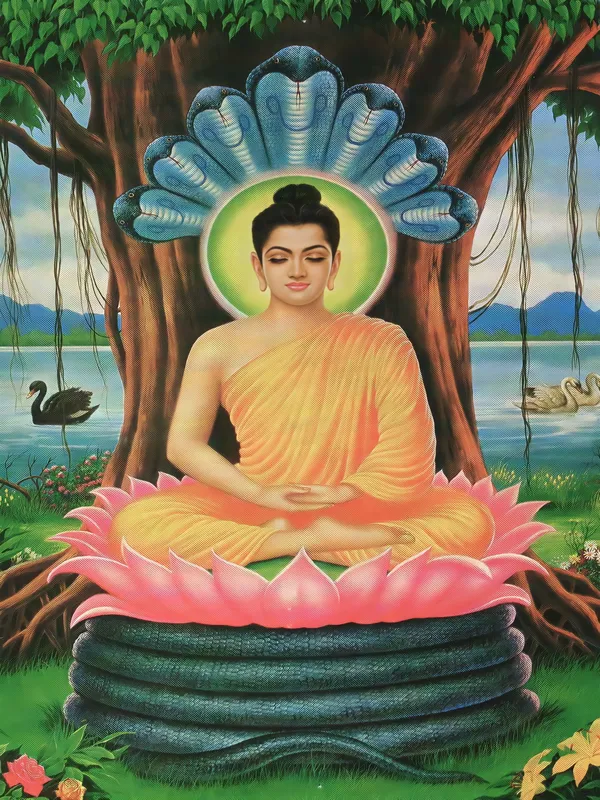Char Dham Yatra: A Spiritual Journey across the Himalayas
Introduction:
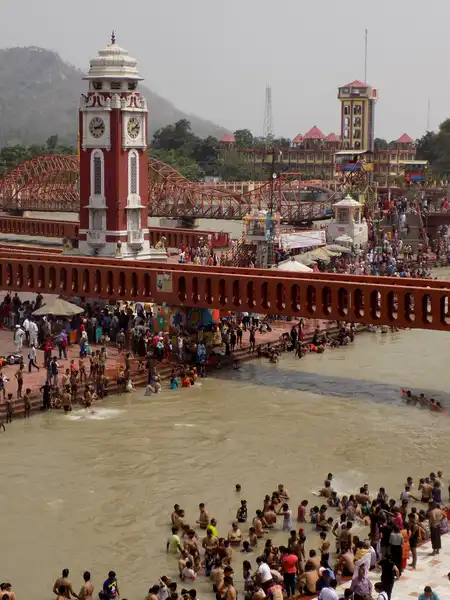
The Char Dham Yatra route, nestled in the Himalayas, holds profound significance in Hinduism with its sites – Yamunotri, Gangotri, Kedarnath, and Badrinath – linked to distinct deities. Pilgrims undertake this challenging journey not only for exploration but also for spiritual purification, seeking blessings, and renewal.
The origins of the Yamuna and Ganges rivers at Yamunotri and Gangotri are revered for their cleansing properties. Kedarnath represents transcendence through a demanding trek, while Badrinath offers solace and enlightenment. Pilgrimage is a key part of India’s diverse cultural and spiritual fabric, symbolizing detachment from the material world and unity with the divine. It fosters faith, answers to life’s questions, and a connection between self and the cosmos. These journeys strengthen communities and reflect India’s unity in diversity, emphasizing a collective search for truth.
History of Char Dham Yatra:
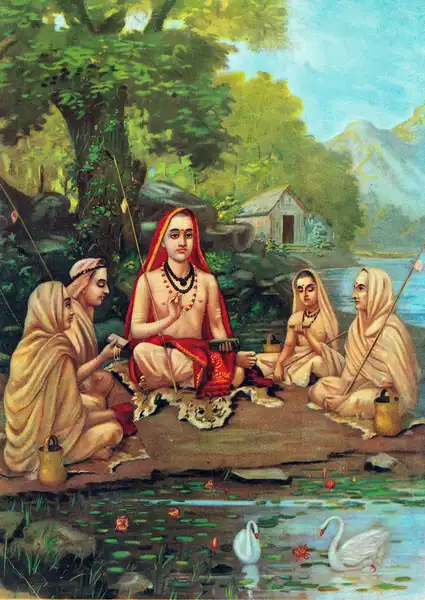
During the early medieval era, Buddhism dominated the Himalayan region, including Char Dham sites. Adi Shankaracharya, a Hindu philosopher and reformer, played a pivotal role in reasserting Hinduism in these areas. Through profound debates with Buddhist scholars, he reinstated the sanctity of Char Dham Yatra to Hinduism, reviving traditions and founding enduring monastic orders.
Adi Shankaracharya, an influential theologian, left an enduring impact on spirituality. His teachings on Advaita Vedanta, highlighting the unity of existence, and commentaries on seminal texts shaped Indian philosophy. His journey across India, encompassing Char Dham, revitalized Hinduism, solidifying his legacy as a unifying force in India’s spiritual fabric.
The Four Abodes of Char Dham Yatra:
Yamunotri:
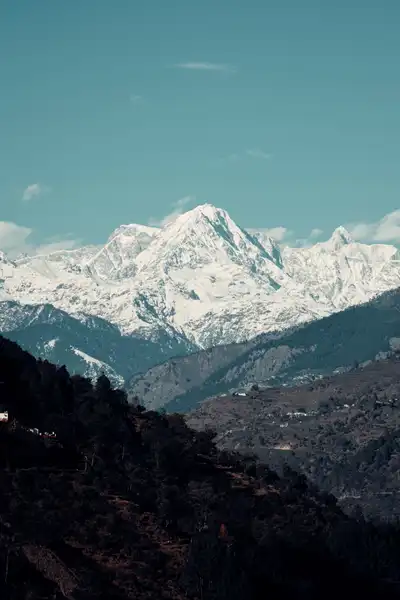
Nestled within the awe-inspiring Garhwal Himalayas, Yamunotri emerges as a sacred sanctuary positioned at a lofty elevation of 3,293 meters above sea level. Found in the Uttarkashi district of Uttarakhand, India, accessing this spiritual haven demands a formidable trek across rugged terrains and lush forests. The journey itself serves as a test of devotion, holding the promise of unparalleled rewards upon completion.
Yamunotri derives its name from Yamuna, a revered river deity of paramount importance in Hindu mythology. The profound belief in the sanctifying powers of bathing in Yamuna’s holy waters for absolution of sins and soul purification resonates deeply. Mythology suggests that Yamuna is the sister of Yama, the god of death, and her purity bestows liberation from the cycle of life and death.
Central to this mystical enclave stands the Yamunotri temple, an architectural marvel adorned with intricate carvings and embellishments. Constructed in the 19th century by Maharani Gularia of Jaipur, the temple presents a harmonious blend of traditional and contemporary architectural styles. Within its inner sanctum resides a silver idol of Goddess Yamuna, exuding a divine aura that captivates every devotee.
Beyond its spiritual significance, Yamunotri is embraced by the splendor of nature. The surrounding landscape is a masterpiece of towering peaks, lush meadows, and glistening glaciers. The presence of Surya Kund, a thermal spring, adds to its allure, allowing visitors to prepare offerings of rice and potatoes. The panoramic view of the Bandarpoonch and Kalind mountain ranges further enhances the enchantment of this sacred haven.
Pilgrims partake in a chilling immersion in the waters of the Yamuna River, followed by a pilgrimage to the Yamunotri temple. The central ritual involves cooking rice and potatoes in the Surya Kund thermal spring, thereafter presenting the offering to the deity.
Embarking on the pilgrimage to Yamunotri constitutes a demanding yet spiritually enriching journey. Devotees undertake a 6-kilometer trek from Janki Chatti, traversing rocky pathways and scenic vistas. The expedition resonates with rhythmic hymn chants, fostering an atmosphere of profound devotion. Upon reaching the temple, pilgrims offer supplications, perform rituals, and seek blessings from the goddess, finding solace and renewal in her divine presence.
Gangotri:
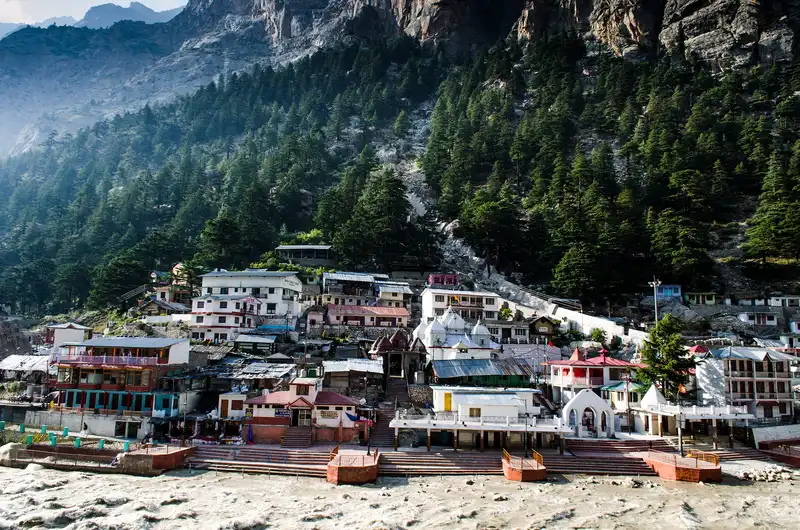
Nestled amidst the embrace of the majestic Himalayas, Gangotri holds its revered stature as a pilgrimage site, situated at an elevation of 3,100 meters in the Uttarkashi district of Uttarakhand, India. To reach this sacred enclave, pilgrims embark on a journey through uneven terrains and winding roads, with the nearest significant town being Uttarkashi, approximately 97 kilometers away. A scenic drive through pine-covered valleys and quaint hamlets leads to the revered destination of Gangotri.
The origins of Gangotri are intertwined with the captivating tale of Ganga’s descent to Earth. Legend narrates that King Bhagirath’s fervent prayers summoned Lord Shiva, who tamed the mighty river Ganga in his tangled locks to quell her formidable force. The gentle flow of Ganga was then released, bestowing nourishment upon the land and salvation to King Bhagirath’s ancestors. Gangotri, the wellspring of this celestial river, holds a significance deeply ingrained in the Hindu faith.
Devotees partake in a purifying dip in the Bhagirathi River and offer prayers at the Gangotri temple. Evenings are illuminated by aarti ceremonies, intertwined with the rhythmic recitation of hymns.
The Gangotri temple, an architectural marvel, stands as a testament to centuries of devotion. Constructed in the 18th century by Amar Singh Thapa, a Gorkha General, the temple embodies a fusion of traditional and Himalayan architectural styles. Carved from white granite, its spiritual ambiance is heightened by the serene surroundings and the rhythmic chants of pilgrims. Within the inner sanctum resides the silver idol of Goddess Ganga, emitting an ethereal allure that captivates every visitor.
Gangotri not only offers spiritual solace but also serves as a gateway to awe-inspiring natural wonders. A trek from Gangotri leads to Gaumukh, the glacier that gives birth to the Ganges. The trail reveals vistas of snow-draped peaks and alpine meadows that leave one breathless. For the adventurous souls, the Bhairon Ghati trek provides an exhilarating experience, culminating at a shrine dedicated to Bhairon, the guardian deity.
Gangotri reverberates with spiritual vitality, particularly during festivities like Gangotri Jayanti and Ganga Dussehra, drawing devotees to celebrate Ganga’s terrestrial arrival. The rituals are captivating, encompassing ablutions, invocations, and aarti ceremonies that cultivate an atmosphere of devotion. The resonance of hymns and the fragrance of incense infuse the air with an aura of transcendence, allowing pilgrims to establish a connection with the divine in this pristine Himalayan sanctuary.
Kedarnath:
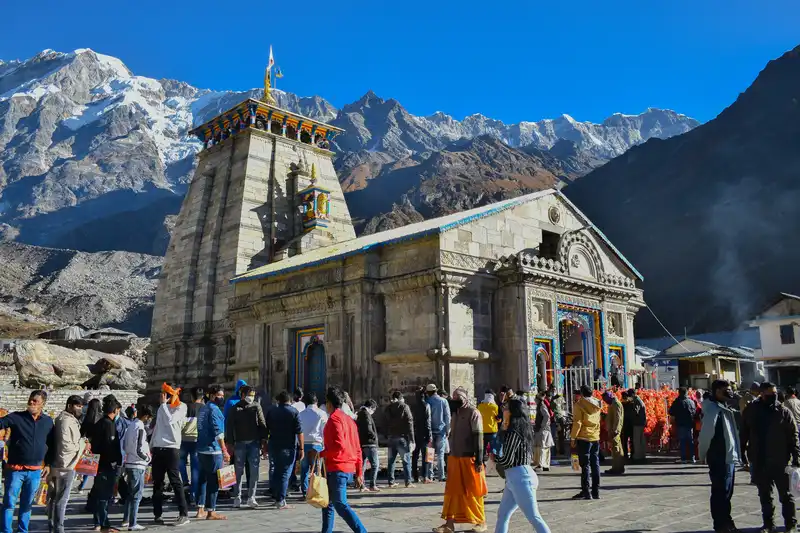
Nestled amid the snow-clad peaks of the Garhwal Himalayas, Kedarnath holds a sacred prominence at an elevation of 3,583 meters in Uttarakhand, India. The journey to this revered sanctuary involves traversing challenging terrains, with Rudraprayag as the nearest significant town. Accessible by road, pilgrims undertake an approximately 16-kilometer journey from Gaurikund, the base camp. Alternatively, ponies or palanquins can be utilized to traverse the path leading to this divine abode.
Kedarnath is immersed in the captivating myth of Lord Shiva’s incarnation as a jyotirlinga, a luminous linga. The narrative recounts that after the momentous Kurukshetra War, the Pandavas sought atonement for their deeds and sought Shiva’s blessings. In response, Lord Shiva concealed himself in the form of a bull in Kedarnath, later revealing his true form to bless the Pandavas. The temple was established at this celestial junction, evolving into a central hub of devotion for generations.
Pilgrims embark on a trek to the Kedarnath temple, offering water to the jyotirlinga as a symbol of absolution from transgressions. The temple’s aarti ceremony unfolds as a spiritually uplifting encounter, brimming with devotion and celestial energy.
The Kedarnath temple, an architectural marvel, boasts a stone structure embodying unwavering devotion. Its design features intricate engravings, echoing the craftsmanship of yore. Beneath its unassuming exterior, the temple’s inner sanctum cradles the revered conical jyotirlinga, attracting devotees from distant realms. Its rugged environs and spiritual ambiance create a unique experience resonating with the soul.
Kedarnath is not just a destination; it’s a journey encapsulating the essence of pilgrimage. The route from Gaurikund to Kedarnath unfolds a transformative experience, winding through dense forests, meandering rivers, and picturesque vistas. For the adventurous souls, the Vasuki Tal trek leads pilgrims to a pristine glacial lake nestled at the base of Vasuki Parbat, revealing mesmerizing views and an unparalleled communion with nature.
The spiritual sanctity of Kedarnath is elevated by the rituals and observances performed by pilgrims. Devotees offer flowers, incense, and radiant flames to the jyotirlinga, invoking blessings and celestial grace. The serene atmosphere encourages meditation and introspection, enabling pilgrims to connect with their inner selves and find solace amidst the mountains. The rhythm of chants and the resonance of bells blend harmoniously with the pristine surroundings, fostering an aura of spiritual elevation.
Badrinath:
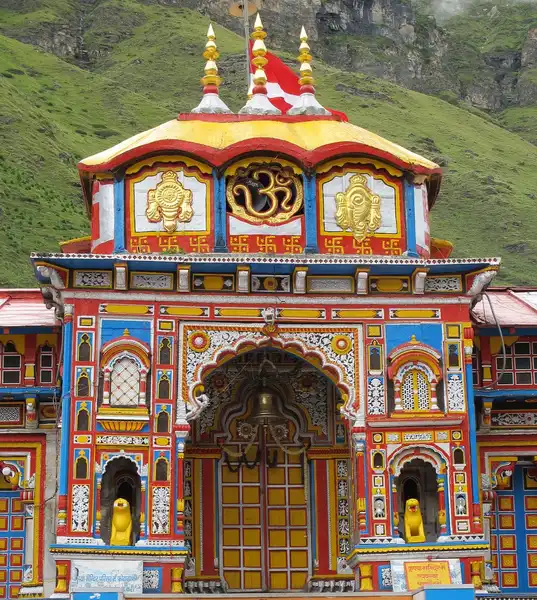
Nestled within the embrace of the Garhwal Himalayas, Badrinath shines as a beacon of spiritual significance at an altitude of 3,300 meters in Uttarakhand’s Chamoli district, India. The pilgrimage to this celestial abode involves navigating winding mountain roads, often offering breathtaking vistas of snow-clad peaks and lush valleys. Roadways and helicopter services facilitate access to this sacred haven, allowing seekers to embark on a transformative journey to invoke divine blessings.
Badrinath’s sanctity is deeply rooted in its association with Lord Vishnu, the primary deity in Hinduism. According to legend, Lord Vishnu meditated here in the padmasana pose, seeking salvation for humanity. This serene act of devotion transformed Badrinath into a spiritual powerhouse, a place where devotees gather to seek blessings, solace, and liberation from the cycle of birth and death.
The Badrinath temple, a blend of architecture and reverence, features a spire that seems to touch the heavens. Crafted from stone and wood, the temple’s intricate carvings and adornments showcase craftsmanship from bygone eras. At the heart of the sanctum lies the revered black stone idol of Lord Vishnu, intricately sculpted, emitting an ethereal aura that captivates all pilgrims.
Devotees partake in ritual ablutions in the Tapt Kund thermal spring before visiting the Badrinath temple. Aarti ceremonies involve offering lamps, incense, and flowers to the deity, accompanied by melodious hymns.
The pilgrimage to Badrinath coincides with a visit to the enchanting Mana village, a mere 3 kilometers away. This village holds the distinction of being India’s last settlement on the Indo-Tibetan border. Its cultural heritage embodies a traditional way of life, characterized by stone houses, a revered cave temple, and the mystique of the Saraswati River flowing underneath. Mana provides seekers with a glimpse into a world of simplicity and spiritual authenticity.
Badrinath exudes devotion year-round, manifesting in rituals and invocations that create an atmosphere of transcendence. Daily aarti ceremonies, where radiant offerings are dedicated to the deity, infuse the air with spiritual vitality. Festivals like Badri-Kedar Utsav and Krishna Janmashtami draw pilgrims and devotees from across the country, filling the environment with vibrant celebrations. The journey to Badrinath transcends mere physical travel; it evolves into a transformative odyssey connecting the seeker with the divine, offering renewal and spiritual rejuvenation.
Planning and Preparing for Char Dham Yatra:
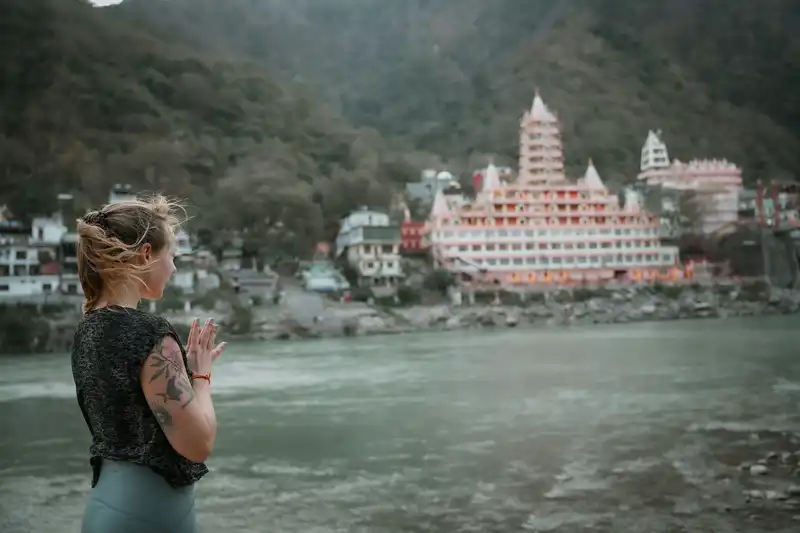
Embarking on a pilgrimage involves not only a spiritual journey but also a physical exploration through the diverse expanses of nature. Meteorological conditions play a significant role in determining the convenience and safety of such journeys. In regions like the Himalayas, weather patterns are unpredictable and challenging, characterized by significant variations based on time of year and altitude. Pilgrims must consider temperature changes, rainfall patterns, and accessibility when planning their sacred trips.
To ensure a smooth and safe Char Dham Yatra, the choice of suitable months is crucial. In places like Badrinath, Kedarnath, and Gangotri, the months of May to June offer relatively moderate conditions and clear skies. This period provides a comfortable environment for traveling and visiting pilgrimage sites, as the thawed snow improves access to the temples and their surroundings.
Another favorable time for Char Dham Yatra is the post-monsoon season from September to October. The heavy monsoon rains have subsided, giving way to clear skies and pleasant temperatures. This time frame offers a pleasant backdrop for both the pilgrimage itself and spiritual practices.
It’s important to recognize that the peak winter months, from November to April, bring heavy snowfall, freezing temperatures, and challenging conditions. During this period, most pilgrimage sites are inaccessible due to snow-covered paths and hazardous weather. Consider undertaking a pilgrimage during these months only if you are prepared for extremely cold conditions and potential travel disruptions.
Ultimately, determining the best months for Char Dham Yatra depends on personal preferences, physical fitness, and the desire for a journey that is both spiritually enriching and physically manageable. Seeking advice from local authorities, considering weather forecasts, and planning ahead can lead to a pilgrimage that combines spiritual elevation with physical comfort.
Char Dham Yatra requires careful consideration of transportation options. These sites, nestled in the Himalayas, are connected by roads and exhibit varying levels of accessibility throughout different seasons. Accommodation options within the vicinity of Char Dham cater to a range of preferences and budgets. By planning ahead, aligning with personal preferences, and making informed decisions about transportation and accommodations, you can organize a Char Dham Yatra that combines spiritual elevation with physical comfort.
Spiritual Experience and Cultural Immersion:
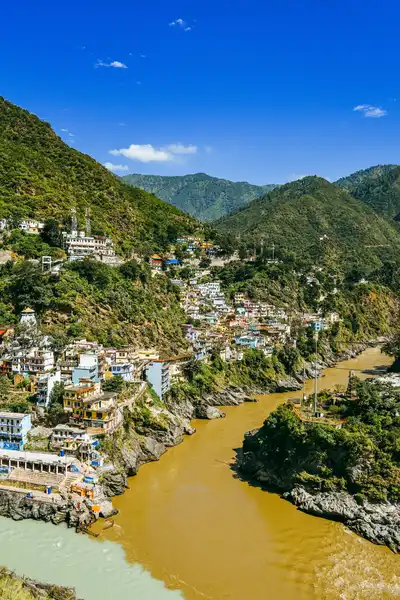
The Char Dham Yatra, rich in spiritual significance, draws pilgrims from diverse paths, creating a tapestry of diversity and collective devotion. As you embark on this journey, you will encounter individuals from various backgrounds, cultures, and traditions, all converging in the name of faith. This unique blend of souls enhances the depth of the pilgrimage experience.
Amidst serene landscapes and sacred sites, you will share stories, prayers, and reflective moments with your fellow travelers. Language barriers tend to fade away, as the universal language of devotion transcends divisions. This co-created camaraderie fosters a sense of unity, turning strangers into companions united in their pursuit of spiritual growth and connection with the divine.
The Char Dham Yatra has witnessed countless accounts of transformative experiences that resonate in the hearts and souls of pilgrims.
Many have shared stories of finding solace and renewal in the peaceful surroundings of the Char Dham Yatra sites. The journey becomes a metaphor for letting go of emotional burdens and finding inner peace.
Numerous pilgrims speak of a profound revitalization of their faith and spirituality. The sacred atmosphere of these places is said to ignite a deep devotion that lingers long after the journey ends.
The breathtaking beauty of the Himalayas and the simplicity of the journey have led some to reassess their priorities, embracing a more uncomplicated way of life.
The solitude and introspection often experienced during pilgrimage have allowed individuals to gain clarity about the purpose of life, relationships, and personal goals.
People with diverse beliefs and backgrounds come together, celebrating a shared spirituality. This harmony fosters understanding, bridging gaps that might seem insurmountable otherwise.
Instances of pilgrims offering help—providing food, offering shelter, or giving emotional support—highlight the empathetic side of humanity that flourishes in sacred spaces.
These transformative narratives stand as evidence of the Char Dham Yatra’s ability to touch hearts and inspire growth. Whether through moments of introspection, collective prayers, or acts of kindness, the pilgrimage has the potential to spark transformation, bringing individuals closer to their inner truths and to one another.
Conclusion:
The Char Dham Yatra is not merely a physical expedition, but a transformative spiritual quest that transcends the Himalayan landscapes to penetrate the depths of one’s soul. Beyond the pilgrimage to sacred sites, it entails an introspective journey of personal growth, seeking blessings, and redemption, and forging a profound connection with the divine.
In the course of the Char Dham Yatra, a tapestry of cultural, historical, and natural treasures unfurls against the backdrop of the Himalayas. The temples, steeped in mythology and spiritual significance, stand as enduring testaments of devotion spanning generations. As pilgrims traverse awe-inspiring landscapes, they become integral to a living legacy of traditions, arts, and music that have flourished over time. Amidst the grandeur of mountains, the serenity of rivers, and the embrace of forests, this Char Dham Yatra offers an opportunity to immerse oneself in the divine essence of the natural world.
I aspire for this article to provide you with assistance. Should you discover value within these words, kindly contemplate sharing them with your loved ones. I invite you to spare a moment to offer your thoughts and appraisals below. For further remarkable content akin to this, I encourage you to delve into our website. Additionally, I extend an invitation to subscribe to my YouTube channel for forthcoming materials of similar nature. Lastly, feel unrestrained to establish a connection with me through social media. Wishing you a splendid day ahead!
हरि ॐ तत्सत्
FAQs:
Here are a few frequently asked questions (FAQs) regarding the Char Dham Yatra:



